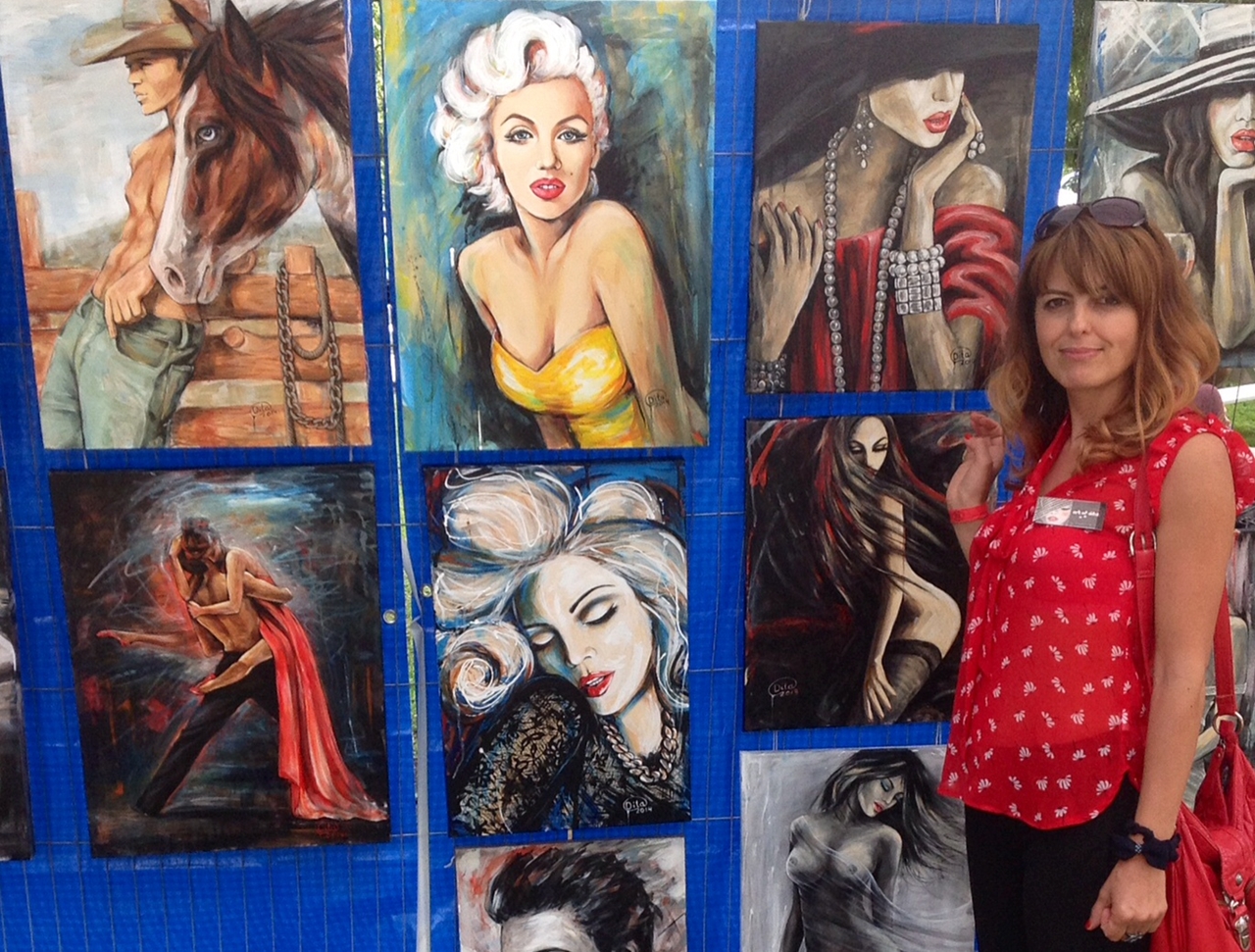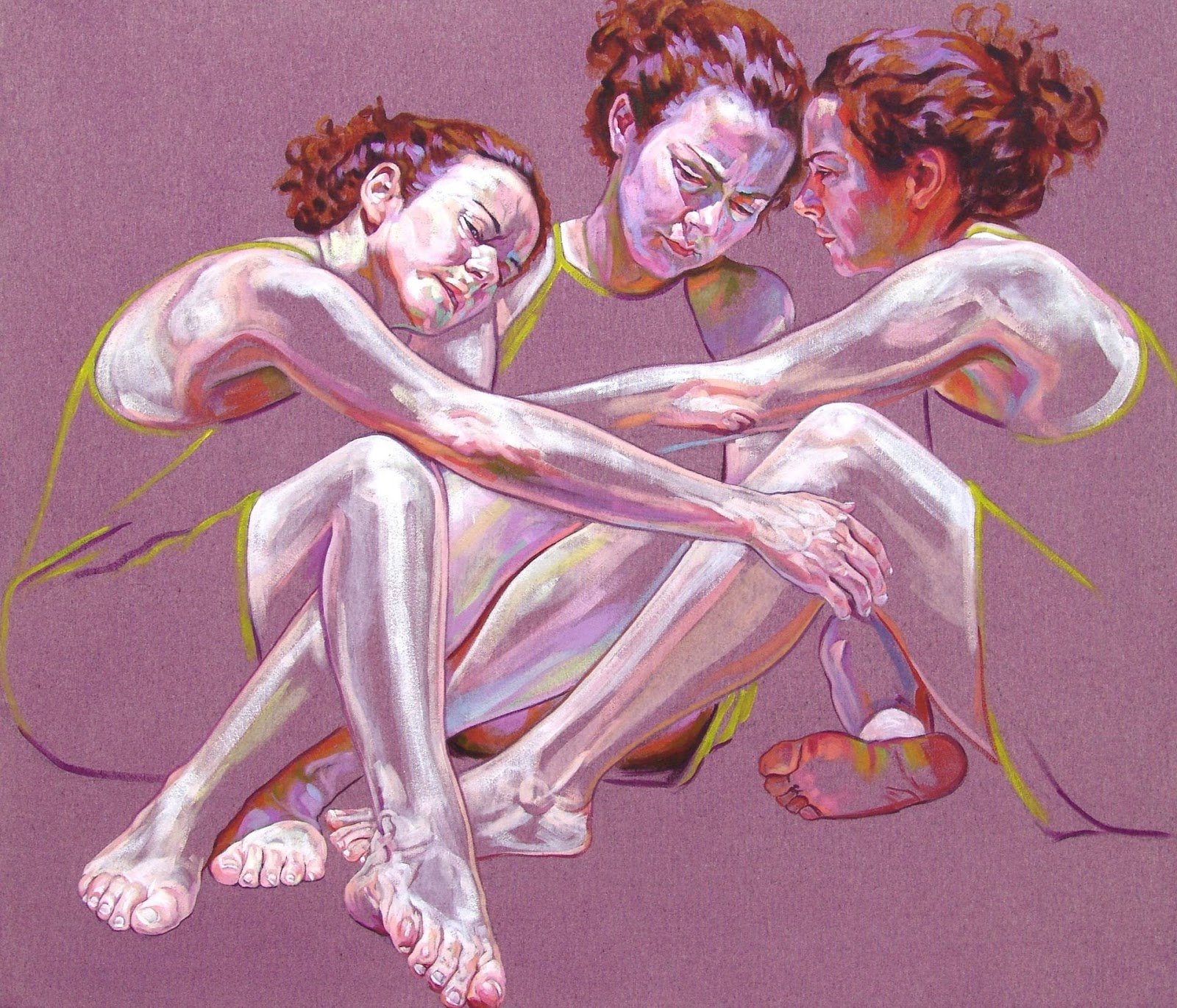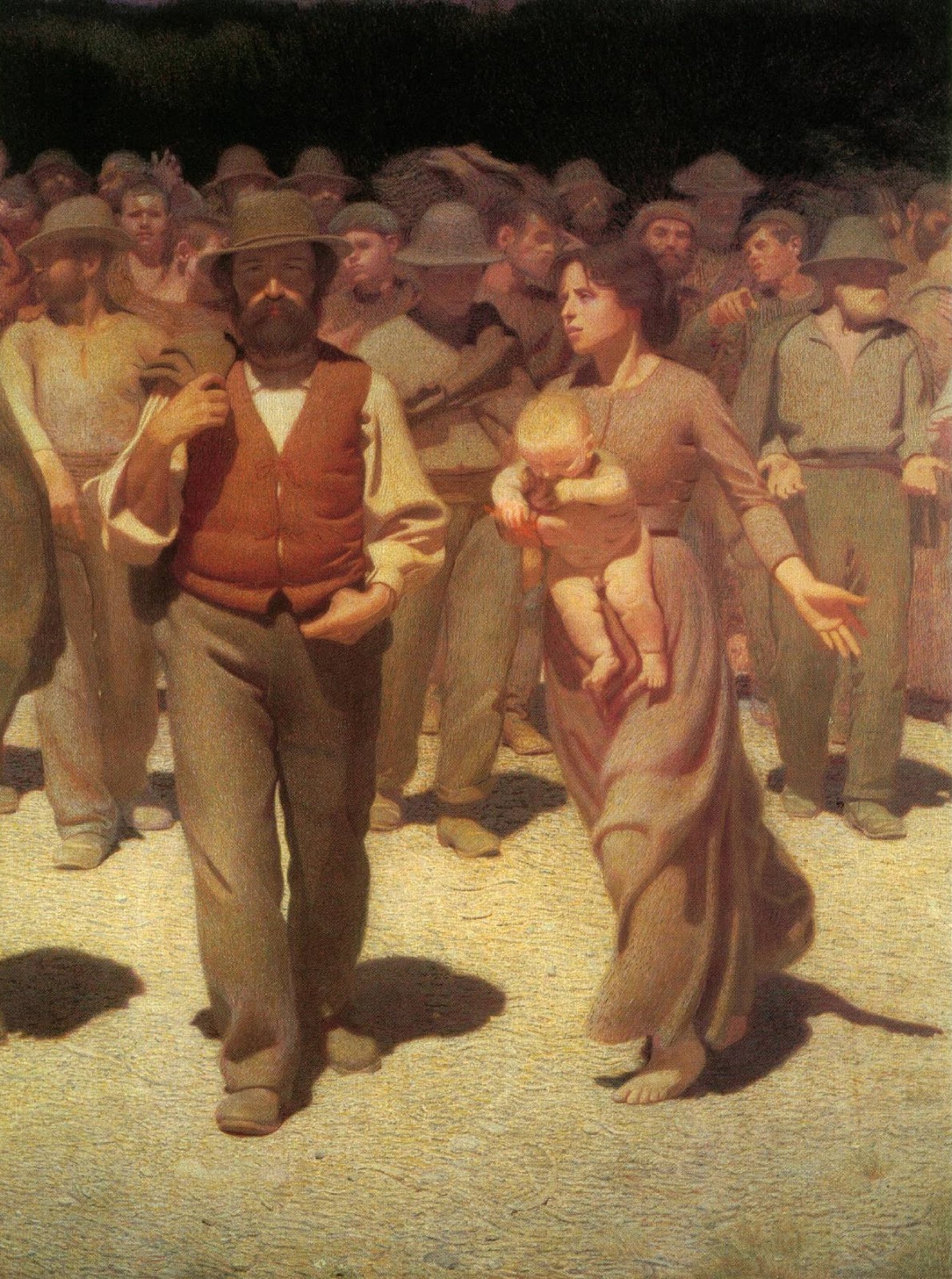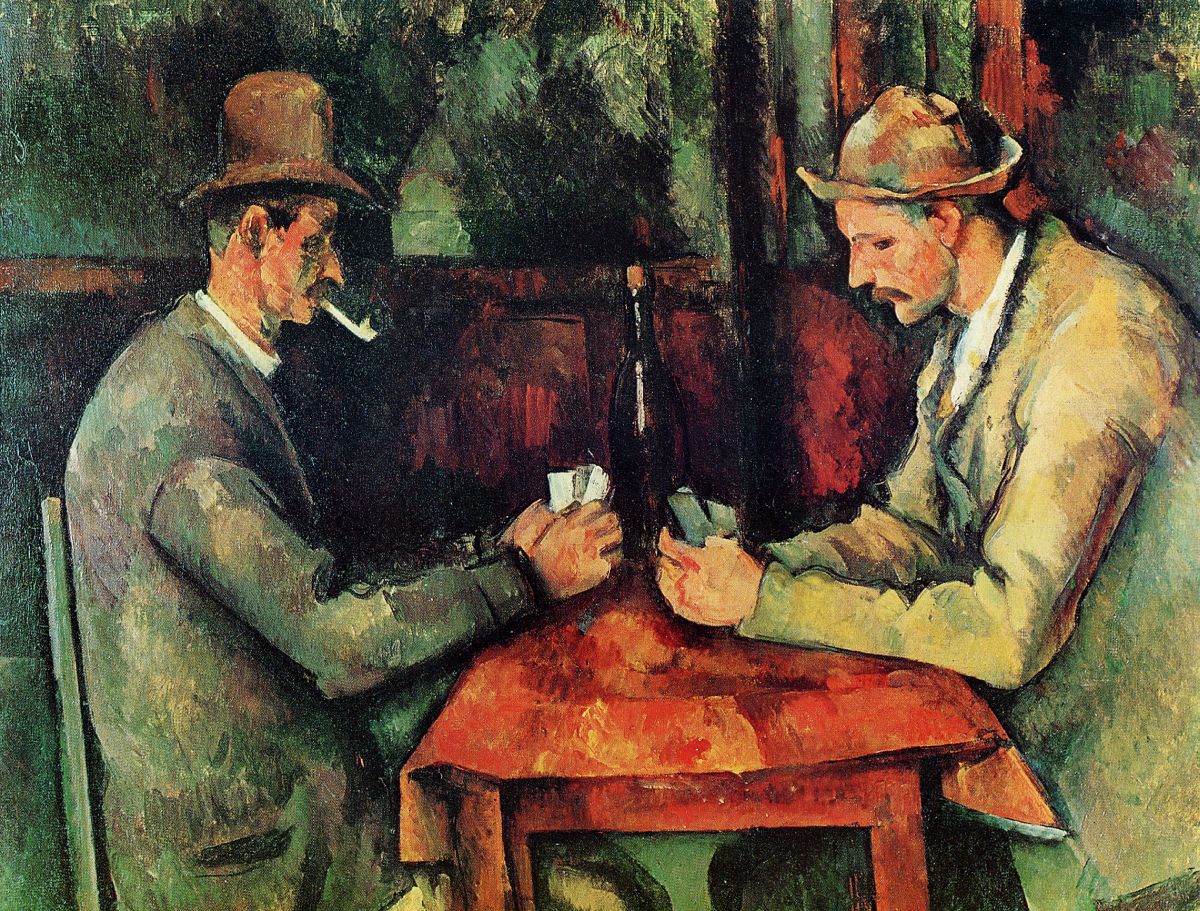Award winning artist Dita Omuri, born and raised in northern Albania, escaped her home country running towards the unknown and away from the restricted ways of expressing her emotions through art.
From a very young age, Dita’s sketchbook was her constant companion. By winning a young art competition she secured a scholarship at a traditional Art school aged 14. Learning the “Old Masters Techniques” and becoming aware that the only legal art form in Albania was Social Realism. Her passion for art, freedom and creativity was stifled in Albania.
↧
Dita Omuri | Fashion/Abstract painter
↧
Lorado Taft ~ The Solitude of the Soul /La solitudine dell'anima, 1914
In stone, four life-sized figures, two male and two female, posed around and halfway emerging from, or captured by, an indistinct central volume.By the American sculptor Lorado Taft, 1860-1936. In the collection of the Art Institute of Chicago.
The Neoclassicism of the sculptors Harriet Hosmer and Randolph Rogers was replaced in the second half of the 19th century by the more realistic naturalism of French-trained sculptors such as American sculptor Lorado Zadoc Taf (1860-1936). An instructor in modeling at the School of the Art Institute for 20 years, Taft created public monuments for Chicago that made the city a center for sculpture. The figures in this work are only partly freed from the marble, a technique that emphasizes the mass and outline of the stone.
Explaining The Solitude of the Soul, Taft wrote, “The thought is the eternally present fact that however closely we may be thrown together by circumstances . . . we are unknown to each other”.
↧
↧
Marie Laurencin | Cubist painter
Marie Laurencin (1885-1956) French painter, designer, illustrator, etcher and lithographer. Born in Paris. Studied at the Académie Humbert, where Braque was a fellow pupil. Met Picasso, André Salmon and Apollinaire; influenced by Picasso and Matisse, and began to paint pictures mainly of sloe-eyed girls in a decorative, arabesque-like style. Painted 'Apollinaire, Picasso and their Friends' 1909.
↧
Cristina Troufa, 1974 | Surrealist/Symbolist painter
Cristina Troufa is a Portuguese based artist, working predominately in figurative painting. In recent works, she uses her own image in autobiographical paintings that explore her livings and spiritual beliefs. As a form of self-knowledge and self-questioning, her work explores, in a symbolic and surrealistic way, an inner world, which remains inaccessible to the voyeur, who can only guess what each painting represents.
↧
B. Prabha | Abstract Figure painter
B. Prabha (1933-2001) was a major Indian artist who worked mainly in oil, in an instantly recognizable style. She is best known for graceful elongated figures of pensive rural women, with each canvas in a single dominant color. By the time of her death, her work had been shown in over 50 exhibitions, and is in some important collections, including India's National Gallery of Modern Art."It is my aim to paint the trauma and tragedy of women", - she said.
↧
↧
Leonardo da Vinci ~ Come la musica si dee chiamare sorella e minore della pittura
La musica non è da essere chiamata altro che sorella della pittura, conciossiaché essa è subietto dell'udito, secondo senso all'occhio, e compone armonia con la congiunzione delle sue parti proporzionali operate nel medesimo tempo, costrette a nascere e morire in uno o piú tempi armonici, i quali tempi circondano la proporzionalità de' membri di che tale armonia si compone, non altrimenti che faccia la linea circonferenziale per le membra di che si genera la bellezza umana.
↧
Leonardo da Vinci ~ Il pittore dà i gradi delle cose opposte all'occhio, come il musico dà delle voci opposte all'orecchio
Trattato della Pittura- Parte prima /27
Benché le cose opposte all'occhio si tocchino l'un l'altra di mano in mano, nondimeno farò la mia regola di venti in venti braccia, come ha fatto il musico infra le voci, che benché la sia unita ed appiccata insieme, nondimeno ha pochi gradi di voce in voce, domandando quella prima, seconda, terza, quarta e quinta, e cosí di grado in grado ha posto nomi alla varietà di alzare e abbassare la voce.
Leonardo Da Vinci - Musical Rebus
Se tu, o musico, dirai che la pittura è meccanica per essere operata coll'esercizio delle mani, e la musica è operata con la bocca, ch'è organo umano, ma non per conto del senso del gusto, come la mano senso del tatto; meno degne sono ancora le parole che i fatti.
Ma tu, scrittore delle scienze, non copii tu con mano scrivendo ciò che sta nella mente, come fa il pittore? E se tu dicessi la musica essere composta di proporzione, ho io con questa medesima seguito la pittura come meglio vedrai.
↧
Sir George Clausen RA | Victorian/ Edwardian/Genre painter
Sir George Clausen RA (18 April 1852 - 22 November 1944), was an British artist working in oil and watercolour, etching, mezzotint, dry point and occasionally lithographs. He was knighted in 1927.
George Clausen was born in London on 18 April 1852, the son of a decorative artist. From 1867-1873, he attended the design classes at the South Kensington Schools in London with great success. He then worked in the studio of Edwin Long RA, and subsequently in Paris under Bouguereau and Robert-Fleury. He was an admirer of the naturalism of the painter Jules Bastien-Lepage; about whom he wrote in 1888 and 1892.
↧
Mother Teresa /Jeanie Tomanek ~ Love life /Ama la vita
Love life as it is
Love her fully, unpretentious.
Love her when they love you or hate you when.
Love her when no one understands you,
or when you include everyone.
Love her when all forsake you,
or when you exalt like a king.
Love her when they steal everything,
or when you give it.
Love her when it makes sense
or when it seems not to have even a little‘.
Love her in complete happiness,
or in absolute solitude.
↧
↧
Rainer Maria Rilke ~ La sera/The evening
Johan August Malmström (1829-1901) Dancing Fairies, 1866
Come una indefinibile fata d'ombre...
Vien da lungi la Sera, camminando
per l'abetaia tacita e nevosa.
Poi, contro tutte le finestre preme
le sue gelide guance e, zitta, origlia!
Si fa silenzio, allora, in ogni casa.
As an indefinable shadows fairy,
evening comes from afar, walking
for snowy fir and tacit.
Then, press it against all windows
its cheeks and cold, silent, listen!
There is silence, then, in every home.
↧
Pellizza da Volpedo | Italian Divisionism/Neo-Impressionism
Giuseppe Pellizza da Volpedo (July 28, 1868 - June 14, 1907) was an Italian Neo-Impressionist painter. He was born and died in Volpedo, in the Piedmont region of northern Italy.
Pellizza was a pupil of Pio Sanquirico. He used a Divisionist technique in which a painting is created by juxtaposing small dots of paint according to specific color theory.
↧
Pellizza da Volpedo ~ Il Quarto Stato /The Fourth Estate
The monumental painting Il Quarto Stato /The Fourth Estate by Giuseppe Pellizza da Volpedo (1868-1907) portrays a group of workers on strike. It symbolises the social protest at the beginning of the 20th century, as well as the emergence of a new social class - the proletariat - which becomes aware of its rights within the new industrial society.
↧
Charles Angrand | Neo-Impressionist piainter
Charles Angrand (1854-1926) was a visible presence in the Parisian avant-garde in the late 1880s and early 1890s. Associated with a circle of artists known as the Neo-Impressionists, Angrand emulated the shadowy crayon drawings of Georges Seurat, Neo-Impressionism's standard-bearer. Here Angrand presents himself, not at all as an artist, but as a bourgeois dandy, impeccably dressed and smoking a small cigar.
His dashing figure emerges from a penumbra of black ground. Following Seurat's lead, Angrand deftly manipulates the stark white of the textured paper to illuminate the darkness. Fellow Neo-Impressionist Paul Signac praised Angrand's crayon drawings: "… his drawings are masterpieces. It would be impossible to imagine a better use of white and black …These are the most beautiful drawings, poems of light, of fine composition and execution". | © The Metropolitan Museum of Art
↧
↧
Giovanni Panza ~ Impressionist/Genre painter
Giovanni Panza, 1974 (a destra)
Giovanni Panza (Miseno, March 9, 1894 - Napoli, December 20, 1989) was an Italian painter.
Born into a family of poets and painters, he was the nephew of Salvatore Postiglione and Luca Postiglione, sons of the painter Raphael Postiglione, who introduced him to painting.
Besides being a painter was Panza, like Uncle Luke, also a poet and writer.
His painting remained faithful to the tradition-romantic nature, tracing the figurative tradition of the Neapolitan school of the nineteenth century.
Represented landscapes, figures, roads, bucolic scenes, markets that he derived from the daily life of the neighborhoods in Naples.
↧
Madre Teresa /Agim Sulaj ~ The most beautiful day / Il giorno più bello
The most beautiful day: Today.
The easiest thing: Equivocate.
The biggest obstacle: Fear.
The gravest error: give up, to despair.
The root of all evils: Egoism.
The most beautiful occupation: Work.
The worst route to follow: Faintheartedness.
The best teachers: Children.
Il giorno più bello? Oggi.
L’ostacolo più grande? La paura.
La cosa più facile? Sbagliarsi.
L’errore più grande? Rinunciare.
La radice di tutti i mali? L’egoismo.
La distrazione migliore? Il lavoro.
La sconfitta peggiore? Lo scoraggiamento.
I migliori professionisti? I bambini.
↧
Leonardo da Vinci ~ Conclusione del poeta, del pittore e del musico
Trattato della Pittura- Parte prima /28
Tal differenza è in quanto alla figurazione delle cose corporee dal pittore al poeta, quant'è dai corpi smembrati agli uniti, perché il poeta, nel descrivere la bellezza e bruttezza di qualunque corpo, te lo dimostra a membro a membro, ed in diversi tempi, ed il pittore tel fa vedere tutto in un tempo. Il poeta non può porre colle parole la vera figura delle membra di che si compone un tutto, come il pittore, il quale tel pone innanzi con quella verità ch'è possibile in natura.
↧
Leonardo da Vinci ~ Quale scienza è meccanica, e quale non è meccanica
Trattato della Pittura- Parte prima /29
Dicono quella cognizione esser meccanica la quale è partorita dall'esperienza, e quella esser scientifica che nasce e finisce nella mente, e quella essere semimeccanica che nasce dalla scienza e finisce nella operazione manuale.
Ma a me pare che quelle scienze sieno vane e piene di errori le quali non sono nate dall'esperienza, madre di ogni certezza, e che non terminano in nota esperienza, cioè che la loro origine, o mezzo, o fine, non passa per nessuno de' cinque sensi.
↧
↧
Rainer Maria Rilke ~ Letters on Cézanne /Lettere su Cézanne
The extraordinary letters (translated from the german by Jane Bannard Greene), show to what degree the eye of one artist can penetrate to the essence of another art.
The most distinguished of modern German poets, Rainer Maria Rilke, was born when Paul Cézanne had already been painting nearly a decade.
The most distinguished of modern German poets, Rainer Maria Rilke, was born when Paul Cézanne had already been painting nearly a decade.
Portrait of Rainer Maria Rilke by Knut Odde, 1897
↧
Auguste Rodin ~ The Drawings /Watercolours
Auguste Rodin (1840-1917) was a prolific draughtsman, producing some 10,000 drawings, over 7,000 of which are now in the Musée Rodin, Paris. His drawings were seldom used as studies or projects for a sculpture or monument. The draughtsman’s oeuvre developed in tandem with the sculptor’s. Although the works on paper can only be shown periodically, owing to their fragility, the role they played in Rodin’s art was by no means minor.As the sculptor himself said at the end of his life, “It’s very simple. My drawings are the key to my work”, (Benjamin, 1910). | © Musée Rodin, Paris.
↧
Rainer Maria Rilke ~ Letters on Rodin /Lettere su Rodin
Rilke to Lou Andreas-Salomè
Berlino‒Westend
Oberneuland bei Bremen,
8 august 1903
... When I first came to Rodin and lunched with him out there in Meudon with people to whom one was not introduced, at the same table with strangers, I knew that his house was nothing to him, a paltry little necessity perhaps, a roof for time of rain and sleep; and that it was no care to him and no weight upon his solitude and composure.
↧
































